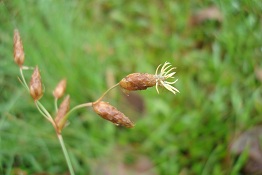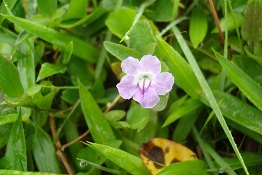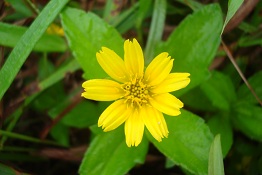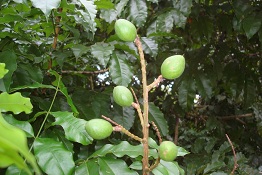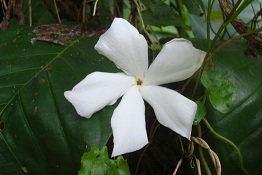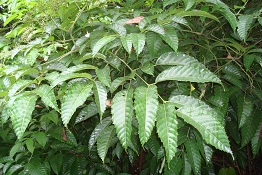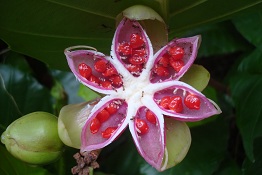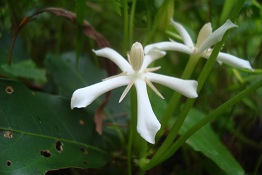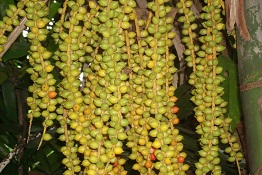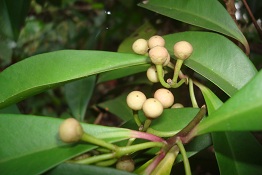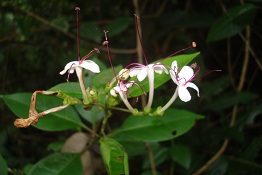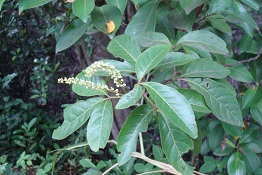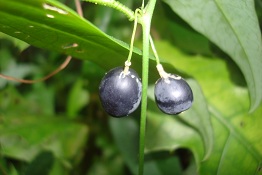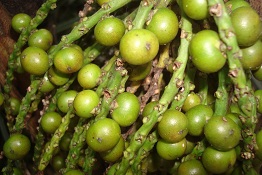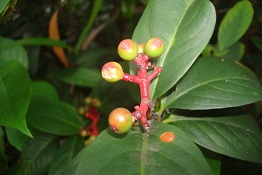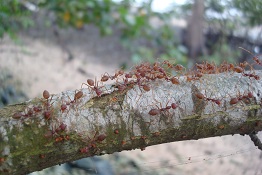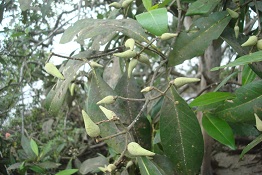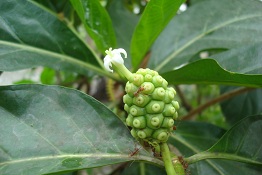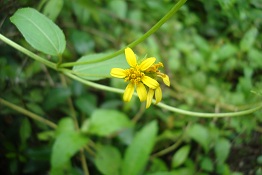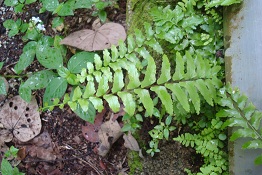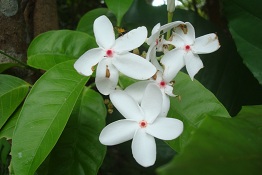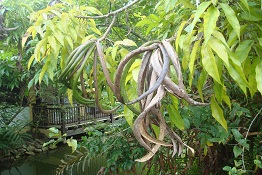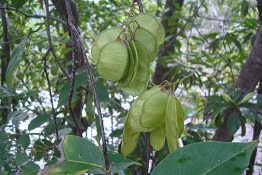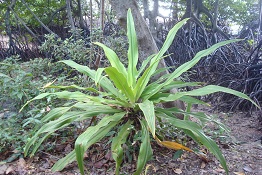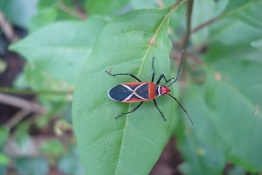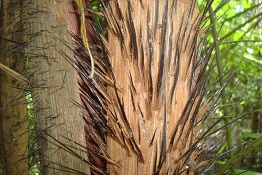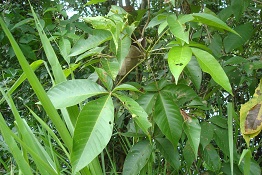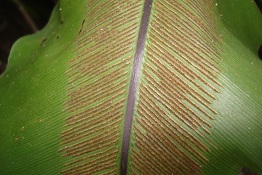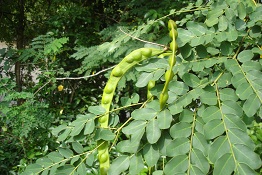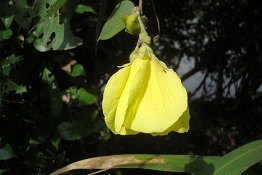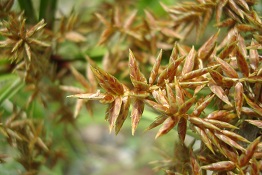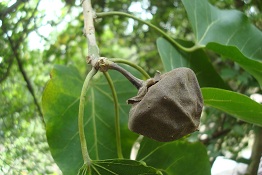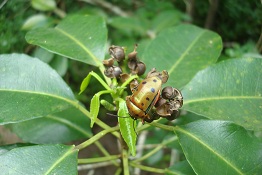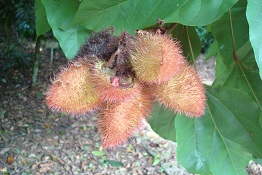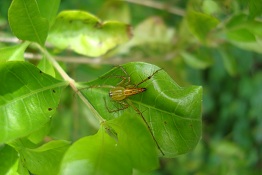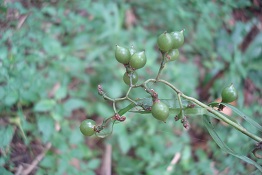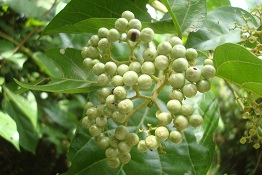Highlight:
s.jpg) This was my 4th trip to Sungei Buloh Wetland Reserve this year
after more than 5 months. It was a Saturday where the public buses do not stop at the main gate of the Reserve. I dropped off at the Kranji
Reservoir Park and moved along the Kranji Trail. The Trail was rather peaceful with very little human traffic --- saw only about 5 people
during my 80 minutes tracking toward the entrance of the Reserve.
This was my 4th trip to Sungei Buloh Wetland Reserve this year
after more than 5 months. It was a Saturday where the public buses do not stop at the main gate of the Reserve. I dropped off at the Kranji
Reservoir Park and moved along the Kranji Trail. The Trail was rather peaceful with very little human traffic --- saw only about 5 people
during my 80 minutes tracking toward the entrance of the Reserve.
Slugs happened to be in season as I saw a number of them on several plants along the Trail. Other insects were also relatively active during this early hour of the day. Quite a few butterflies were fluttering around but only one was interested to have its picture taken. Below were the few slimy creatures seen along the Trail.
s.jpg)
s.jpg)
s.jpg)
s.jpg)
From left to right: Yellow-shelled Semi-slug
(Parmarion martensi), Arboreal Snail
(Helicarion perfragilis), common land snail
(Quantula striata) and Pythia Snail
(Pythia trigona).
Here were the other creatures seen during this trip. The first butterfly (Common Tit, Hypolycaena erylus teatus) was seen at the Trail while the next one (Common Mormon, Papilio polytes romulus) was seen in the Reserve. The two moth-like insects were actually planthoppers (Ricanula stigmatica and Ricanula sublimata respectively). There was a skink and the usual monitor lizard. The last one was a spider that looked like an ant.
s.jpg)
s.jpg)
s.jpg)
s.jpg)
s.jpg)
s.jpg)
s.jpg)
s.jpg)
s.jpg) I saw a number of unknown plants. One of them (right) was
this weed which was up to 50cm tall. It had flower heads resemble that of
Ageratum conyzoides (White Weed) but they appeared from the nodes of the stem with
no stalk below the flower heads, similar to that seen with
Alternanthera sessilis (Sessile Joyweed). I had seen this plant in another location
since January but was not able to find its identity. [Update:
Struchium sparganophorum]
I saw a number of unknown plants. One of them (right) was
this weed which was up to 50cm tall. It had flower heads resemble that of
Ageratum conyzoides (White Weed) but they appeared from the nodes of the stem with
no stalk below the flower heads, similar to that seen with
Alternanthera sessilis (Sessile Joyweed). I had seen this plant in another location
since January but was not able to find its identity. [Update:
Struchium sparganophorum]
.jpg)
s.jpg)
This unknown climber (left) had palm-shaped leaves.
However, no flower or fruit was seen. [Update:
Ipomoea mauritiana]
s.jpg)
s.jpg)
s.jpg) There were some new ferns planted at the entrance bridge
area of the Reserve. Two of them were Pityrogramma calomelanos (Silver Fern) and
Cyclosorus interruptus. Another one (right) was unfamiliar to me. Its secondary
pinna (leaflets) had long and slender tips. The young sori were located in false indusia (fold back of the edge of the leaflets), similar
to that seen in the Adiantum latifolium (Broadleaf Maidenhair). It should be a fern
that I had not seen before. [Post note: Pteris tripartita]
There were some new ferns planted at the entrance bridge
area of the Reserve. Two of them were Pityrogramma calomelanos (Silver Fern) and
Cyclosorus interruptus. Another one (right) was unfamiliar to me. Its secondary
pinna (leaflets) had long and slender tips. The young sori were located in false indusia (fold back of the edge of the leaflets), similar
to that seen in the Adiantum latifolium (Broadleaf Maidenhair). It should be a fern
that I had not seen before. [Post note: Pteris tripartita]
s.jpg)
s.jpg)
Another unknown plant (left) was a tree standing at
the side of the pond next to the entrance. I had been observing this tree for a while but the branches were usually high up and I never got
to take any good picture of it. This time round, one of the branches came pretty near to the bridge. I managed to take some pictures of its
seed pods and leaves but the white flowers were still a distance away.
[Post note: Dendrolobium umbellatum]
s.jpg)
s.jpg)
.jpg)
Of the all unknown plants seen, I did manage to
identify one (Avicennia rumphiana, Api-api Bulu). This one was not too difficult to
identify as I do know the other species in the same genus.
s.jpg)
s.jpg)
s.jpg)
The surprise of the day was the sighting of the
Eulophia graminea (Grass Orchid) at the side of a gravel path in the Reserve. It had
chosen to grow just beside the mangrove swamp. I did not expect to see this orchid in such environment. Furthermore, it seemed to be
thriving well with flowers, fruits and seed pods.
At around 12:30 pm, I was back at the bus stop where I had started. It was a 30-minute track along the road before I get the bus stop. I did see some other plants but had not added them to the Photo Gallery below since they are not part of the Reserve.
Photo Gallery:
Below are selected photos from this trip arranged according to the sequence that they were taken. There is a text link under the photo that will direct you to more photos of the same species if they are available in my website.
Statistics:
